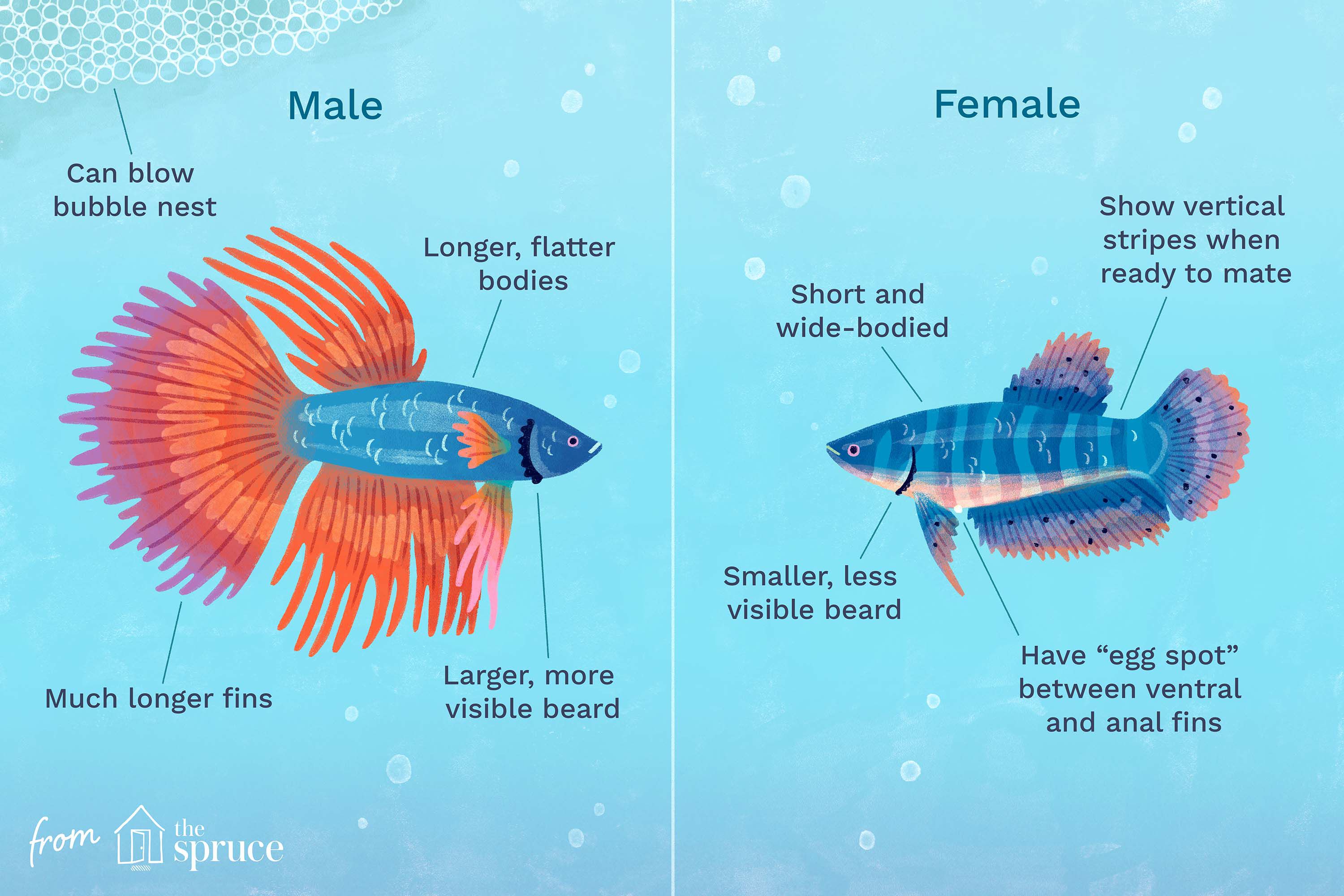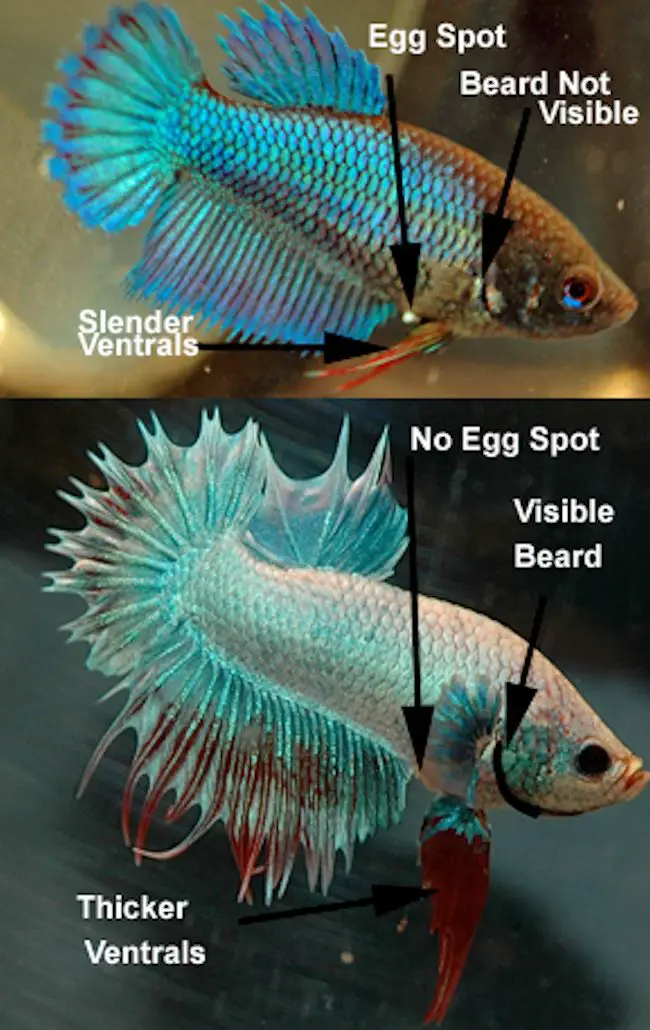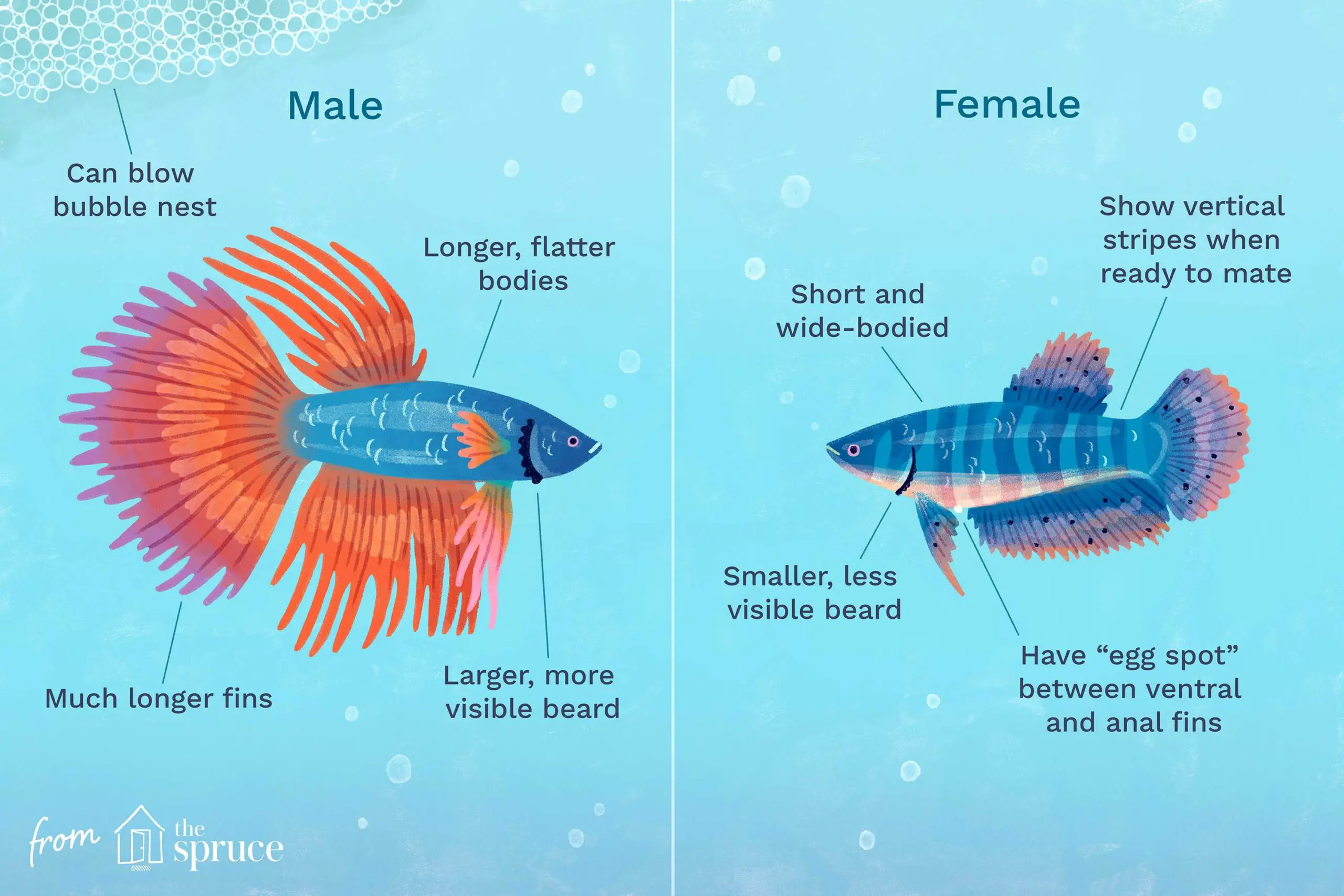Betta fish are one of the most popular aquarium pets due to their vibrant colors and unique personalities. However, it can be difficult to determine their gender, which is important if you want to breed them or keep them in a community tank.
In this article, we will explore the physical characteristics and behaviors that can help you identify whether your betta fish is male or female. Whether you are a seasoned fish owner or a new enthusiast, understanding the gender of your betta fish can help you provide the best care for your pet. So, let’s dive in and learn how to tell if your betta fish is male or female!
- Look at the betta fish’s body shape. Males are generally slimmer and more streamlined than females.
- Check the betta’s fin length. Males have longer fins, especially on their tails, while females have shorter, rounder fins.
- Observe the colors of the betta. Males tend to have brighter and more vibrant colors than females.
- Look for the presence of an egg spot. Females have a small white spot on their bellies which is used to lay eggs.

How to Tell if Betta Fish is Male or Female?
When it comes to betta fish, determining their gender can be a bit tricky, especially if you are not familiar with the different characteristics that distinguish males from females. Knowing the sex of your betta fish is important because it can affect their behavior, feeding habits, and even their health. In this article, we will guide you through the process of identifying whether your betta fish is male or female, and provide you with some useful information about their differences and similarities.
Physical Characteristics
The most obvious physical difference between male and female betta fish is their fins. Male bettas have longer and more colorful fins than females, while females have shorter and less vibrant fins. This is because male bettas use their fins to attract females during breeding season, while females use theirs for swimming and maneuvering. However, it is important to note that some female bettas can also have long fins, so this alone is not a reliable indicator of their gender.
Another physical characteristic that can help you distinguish between male and female bettas is their body shape. Male bettas are generally slimmer and have a more streamlined body shape, while females tend to be rounder and have a shorter body length. This is because female bettas need more space in their bodies to carry eggs during breeding season.
Behavioral Differences
Aside from their physical characteristics, male and female bettas also exhibit different behaviors that can help you determine their gender. Male bettas are more aggressive and territorial than females, especially towards other males. They will flare their fins and display their vibrant colors to intimidate rivals and show off to potential mates. Female bettas, on the other hand, are generally more peaceful and less assertive, although they can also become aggressive when defending their territory.
Another behavioral difference between male and female bettas is their feeding habits. Male bettas tend to have a larger appetite and will eat almost anything you give them, while females are more selective and may refuse food if they are not interested. This is because female bettas need to conserve their energy during breeding season, and will only eat enough to sustain themselves and their eggs.
Other Indicators
If you are still unsure about the gender of your betta fish, there are a few other indicators that you can look for. One of them is the presence of an ovipositor, which is a small tube located near the ventral fin of female bettas. This is used to lay eggs during breeding season, and is not present in male bettas.
Another indicator is the size of your betta fish. Male bettas are generally larger than females, although this can vary depending on their breed and genetics. If you have multiple bettas in the same tank, you may also notice that males tend to be more active and dominant, while females are more passive and submissive.
Benefits of Knowing Your Betta Fish’s Gender
Knowing the gender of your betta fish can have several benefits, especially if you are planning on breeding them. Breeding bettas can be a rewarding experience, but it requires careful planning and preparation. By knowing the sex of your bettas, you can ensure that you are pairing compatible mates and creating a healthy breeding environment.
In addition, knowing the gender of your betta fish can also help you provide better care for them. Male and female bettas have different nutritional needs and behavioral patterns, so by understanding their gender, you can tailor their diet and environment to their specific requirements.
Conclusion
In conclusion, identifying the gender of your betta fish can be a fun and rewarding experience that can help you provide better care for them and create a healthy breeding environment. By looking at their physical characteristics, behaviors, and other indicators, you can determine whether your betta fish is male or female and gain a better understanding of their unique needs and personalities.
Frequently Asked Questions
Betta fish are popular pets due to their vibrant colors and easy-to-maintain nature. However, it can be tricky to determine the sex of your betta fish. Here are some commonly asked questions regarding how to tell if a betta fish is male or female.
1. How can you tell if a betta fish is male or female?
The easiest way to determine the sex of a betta fish is by examining its fins. Male betta fish have longer, flowing fins than females. Additionally, male bettas have a more vibrant coloration and a more pointed body shape. Female bettas have shorter fins and a more rounded body shape.
If you have multiple bettas in a tank, you may also notice the males flaring their fins and displaying aggressive behavior towards one another. Female bettas are typically less aggressive and can be kept together in a community tank.
2. Can betta fish change sex?
No, betta fish cannot change their sex. Once a betta fish has been identified as male or female, it will remain that sex for the rest of its life.
However, it is important to note that some betta fish may be intersex or hermaphroditic, meaning they have both male and female reproductive organs. These cases are rare and should not be expected when determining the sex of a betta fish.
3. Are there any other physical characteristics to look for when determining the sex of a betta fish?
In addition to the length of their fins and body shape, there are a few other physical characteristics that can help determine the sex of a betta fish. Male bettas have a small, white spot on their underbelly called a “gonopodium,” which is used for breeding. Females do not have this feature. Additionally, males may have a line or stripe on their body that is absent in females.
It is important to note that these characteristics may not be present in all bettas, so it is best to rely on fin length and body shape for determining sex.
4. Can you determine the sex of a betta fish when it is young?
It can be difficult to determine the sex of a betta fish when it is young, as their fins may not have fully developed. However, as the fish grows and matures, the differences in fin length and body shape will become more apparent.
If you are purchasing a young betta fish and want to ensure a certain sex, it is best to buy from a reputable breeder who can provide information on the fish’s parentage and expected sex.
5. Why is it important to know the sex of a betta fish?
Knowing the sex of your betta fish can help with proper care and maintenance. For example, male bettas may require a larger tank and more hiding spots to prevent aggression towards other fish. Female bettas can be kept in groups or community tanks, while males should be kept separate.
Additionally, if you are interested in breeding your betta fish, it is important to have a male and female pair. Attempting to breed two males or two females will not result in successful reproduction.

How to identify MALE and FEMALE betta Fish ” Female betta fish make bubble nests”
In conclusion, identifying the gender of your Betta fish can be challenging, but it is essential if you want to breed them or keep them in a community tank. By observing their physical traits, behavior, and coloration, you can determine whether your Betta is male or female.
Remember to look for the presence of a beard or a longer, more pointed ventral fin, which are clear indicators of a male Betta. On the other hand, females have a shorter, rounder ventral fin and a more subdued coloration.
If you are still unsure of your Betta’s gender, you can seek the advice of a veterinarian or a knowledgeable fish breeder. With practice and experience, you can become an expert in identifying the gender of Betta fish and enjoy the satisfaction of owning a thriving aquarium.

